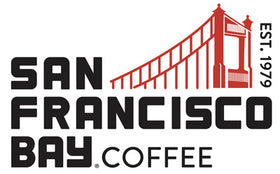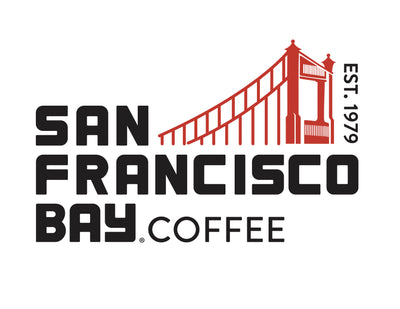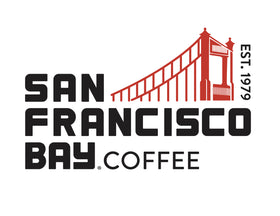Top 10 Coffee Brewing Mistakes to Avoid

We've all been there—standing bleary-eyed in the kitchen, desperately awaiting that first magical sip of coffee, only to be disappointed by a cup that's bitter, weak, or just...off. The fact of the matter is that brewing an exceptional cup of coffee isn't just a matter of luck. It requires avoiding common mistakes that sabotage your morning ritual before it even begins. If you're a connoisseur or simply someone who appreciates a great cup to start your day, mastering these fundamentals will transform your coffee experience. Let's discuss the ten most common brewing mistakes and how to fix them—your taste buds will thank you.
1. Using Too Hot or Cold Water
When water is too hot (above 205°F), it extracts bitter compounds that overwhelm the delicate flavors in your beans. Too cold, and you'll end up with a weak, under-extracted brew lacking the full-bodied flavor profile you deserve.
The sweet spot? Between 195-205°F for most brewing methods. This temperature range optimally extracts the complex flavors without releasing the bitter compounds. For cold brew, room temperature water is perfect, as the extended brewing time compensates for the lower temperature.

2. Incorrect Grind Size
Using the wrong grind size is like trying to fit a square peg in a round hole—it simply won't produce the results you're looking for. The grind size directly impacts how quickly water extracts flavor from your coffee grounds.
When your grind is too fine for the brewing method, over-extraction occurs, resulting in bitter coffee. Too coarse, and you'll experience under-extraction, leaving you with weak, acidic coffee.
The type of grinder matters, too. Blade grinders chop beans unevenly, creating inconsistent particle sizes that extract at different rates. A quality burr grinder creates uniform grounds that extract evenly, resulting in a more balanced cup.

3. Imbalanced Coffee-to-Water Ratio
Too much coffee leads to a concentrated, potentially bitter brew, while too little results in a weak, flavorless experience.
For most brewing methods, start with this ratio: 1-2 tablespoons of ground coffee per 8 ounces of water. In weight measurements, aim for 15 grams of coffee to 250ml of water.

Different brewing methods might require slight adjustments:
-
Pour-over methods typically use a 1:16 ratio (1 gram of coffee to 16 grams of water)
-
French press works well with a 1:15 ratio
-
Cold brew benefits from a stronger 1:10 ratio
Remember that these ratios are starting points. Your personal preference matters most, so feel free to adjust slightly until you find your perfect balance.
4. Eyeballing Measurements
"Eyeballing" your measurements might seem convenient, but it leads to inconsistent results—sometimes too strong, sometimes too weak.
A digital scale is your best friend for precise coffee brewing. Measuring your coffee and water by weight rather than volume improves accuracy every time. Coffee beans vary in density, so a tablespoon of one coffee might weigh differently than another.
For those without a scale, use consistent measuring tools: the same scoop for coffee and the same cup for water. Even this level of consistency will significantly improve your brewing results compared to eyeballing.

5. Improper Bean Storage
Coffee beans are surprisingly delicate, and how you store them makes a tremendous difference in your final cup. The three biggest enemies of coffee freshness are air, moisture, and light.

Avoid these common storage mistakes:
-
Storing beans in non-airtight containers
-
Keeping coffee in clear containers exposed to sunlight
-
Refrigerating or freezing your beans (this causes moisture condensation)
-
Grinding your beans the night before brewing
-
Preparing your filter with grounds hours in advance
Instead, store your beans in an opaque, airtight container in a cool, dry place away from direct sunlight. Only grind what you need immediately before brewing to preserve the aromatic oils that contribute to coffee's complex flavor profile.
6. Using Old Beans
That mysterious bag of coffee found in the back of your pantry? It's likely past its prime. Coffee isn't like fine wine—it doesn't improve with age.
Fresh coffee beans are bursting with aromatic compounds and oils that create that magical coffee experience. After roasting, these compounds begin to degrade, with noticeable flavor loss occurring within 2-3 weeks.
For the best experience, look for coffee with a recent roast date (within 2 weeks is ideal) and purchase only what you'll use within 3-4 weeks.
6. Not Cleaning Equipment
Your coffee equipment harbors oils and residue that become rancid over time. This buildup affects the flavor of your coffee and the performance of your brewing equipment.
To establish a regular cleaning routine:
-
Rinse your brewing equipment thoroughly after each use
-
Deep clean your coffee maker monthly with a vinegar solution
-
Clean grinders regularly to remove old grounds and oils
-
Descale equipment in areas with hard water
Even the highest quality beans can't overcome the flavor of rancid oils from dirty equipment. A clean machine is necessary for a clean-tasting cup.
8. Pouring into a Cold Cup
Have you ever noticed how quickly coffee cools when poured into a cold mug? This rapid temperature drop means your coffee doesn't maintain its optimal temperature long enough for you to enjoy its full range of flavors

Pre-warming your mug is a simple yet effective step:
-
Fill your mug with hot water while your coffee brews
-
Dump the water just before serving
-
Enjoy coffee that stays at the ideal temperature for longer
9. Using Tap Water
Coffee is 98% water, so the quality of your water profoundly impacts the taste of your coffee. Tap water often contains chlorine, minerals, and other impurities that interfere with proper extraction and can impart unwanted flavors.
Filtered water creates a clean foundation for your coffee's flavors to shine. If your tap water has a noticeable taste or odor, it will definitely affect your coffee's flavor. Consider using a water filter pitcher or filtered water for brewing.
Distilled water isn't ideal either, as coffee needs some minerals for proper extraction. The best water for coffee has a balanced mineral content that enhances flavor without overwhelming it.
10. Brewing with Sub Par Coffee
Even the most meticulous brewing technique can't transform low-quality beans into a remarkable cup. Quality coffee starts with quality beans.
What makes quality coffee?
-
Third-party certifications like Enveritas and Zero Waste verify sustainable farming practices.
-
Proper processing methods (like Swiss Water® Process for decaf)
-
Freshness and proper roasting
Brew Your Perfect Cup with San Francisco Bay Coffee
At San Francisco Bay Coffee, we're passionate about helping you create the perfect cup every time. Our carefully selected beans are roasted to perfection and packed at peak freshness, ensuring an exceptional coffee experience.
Explore our collection and find your perfect cup today!



